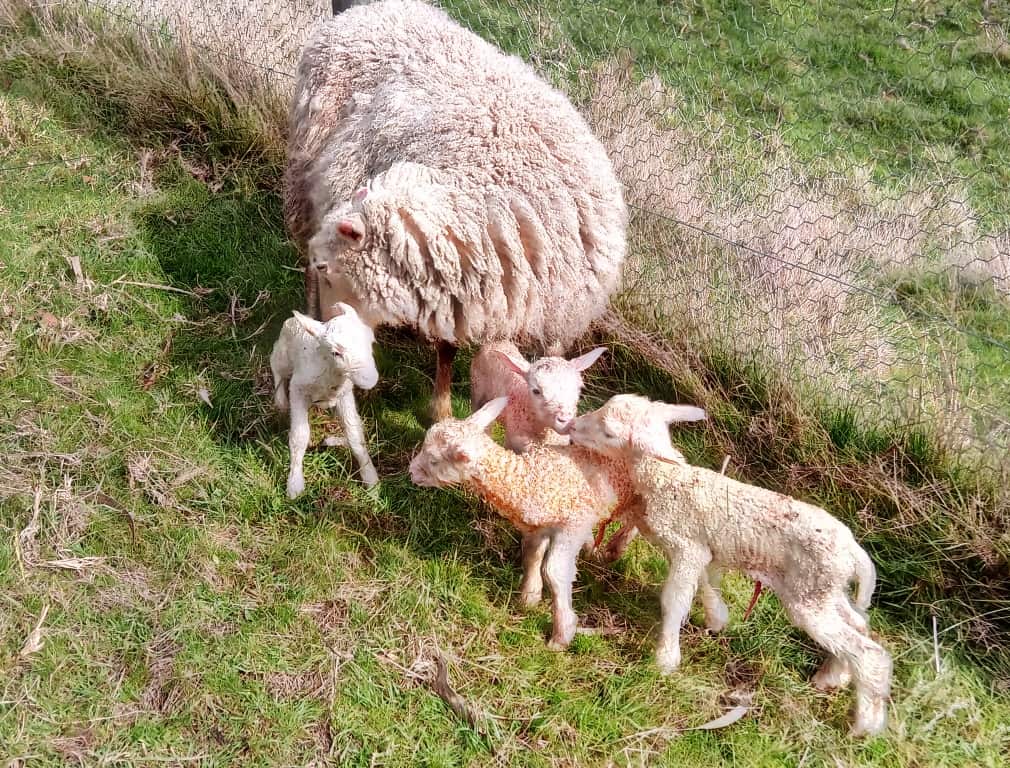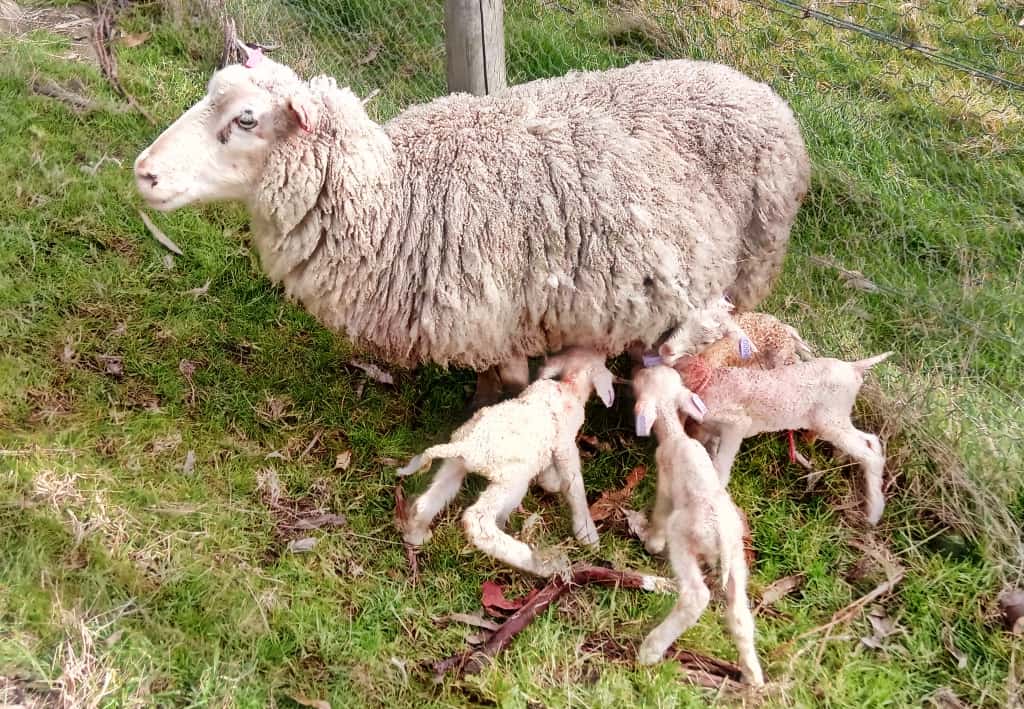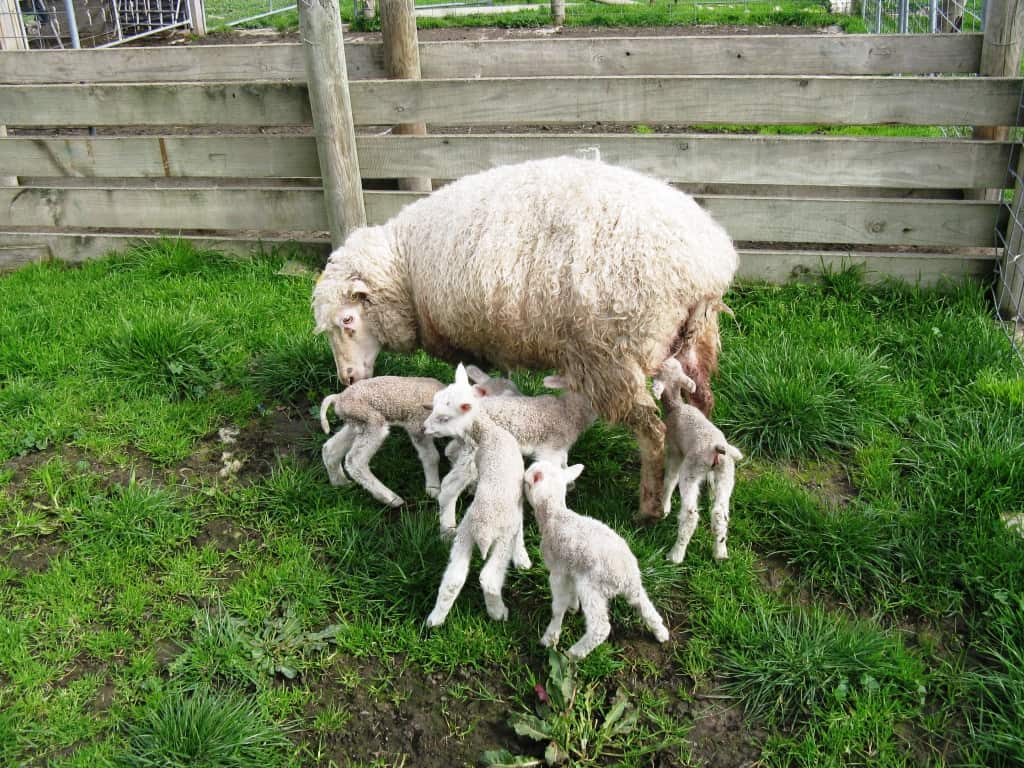If you have read this blog regularly you will realise that I have been a farmer for many years. For the last few decades a sheep farmer. And more specifically Finnsheep, but not just any Finnsheep. These sheep are the result of forty years of very careful, very practical sheep breeding. I believe they are the best Finnsheep, and possibly the best sheep anywhere in the world.
Our aim has been to produce a sheep which will successfully raise 3-4 good lambs every lambing on pasture alone and in every kind of weather – and we have succeeded! At the same time we selected the sheep to produce 4 kilograms or more of soft long fine wool per shearing. This has never been done before. You can find out (much) more about our sheep on my main sheep page here: finnsheep.com
We used to farm over 1000 ewes but now we are ‘retired’ on just 25 acres and have time to pursue other interests such as hiking and canoeing we have many fewer sheep, thank goodness, – so it is not so much work, but the work of building a fox-proof fence prior to this year’s lambing is still keeping me too busy to get up the bush (unfortunately). Soon.
This morning was the first day of lambing this year. After the morning coffee ewe number 4002 graced us with her usual quads on our wet and windy hillside:
Four 3kg+ lambs born up against a netting fence in the paddock this morning, as you can see. Still wet. We are taking orders now. First come, first served NB: This is not our best sheep. She is just the first to lamb this year. Only another approx 65 to go.
 We always tag the lambs in both ears as soon as they are born (as you can see) and note down litter size, weights, gender and other relevant comments, eg Nice wide mouth. Good wool at birth. Good ear/face cover, etc. We have forty years of such breeding records. We do not lose track of any information about our sheep. These guys hurried straight under mum looking for a drink.
We always tag the lambs in both ears as soon as they are born (as you can see) and note down litter size, weights, gender and other relevant comments, eg Nice wide mouth. Good wool at birth. Good ear/face cover, etc. We have forty years of such breeding records. We do not lose track of any information about our sheep. These guys hurried straight under mum looking for a drink.

Sometimes they even have five good (ie 3 kg) lambs.

The critical improvements we have made to Finnsheep are birth size, ewes’ milking ability wool yield and wool cover. Others have sheep which will have 3-5 lambs but the lambs are usually small such that outdoor survival of litters is dubious at best.
We believed that this situation had likely occurred largely since WW1 and especially WW2 in Europe as the sheep became more intensively managed and the use of various food supplements became more commonplace.
Since the breed has existed for over a thousand years this situation could not have existed in the distant past. Fortunately the genes to rectify the problem were still present. Our focus has always been on producing sheep which can do well n a paddock situation without human intervention.
A certain percentage of our Finnsheep have a gene for four teatedness, meaning that they have four milking teats. Fixing this characteristic (in all the sheep) will be an important goal for us. Last year (especially) we had some lambs born with extraordinary muscling (for Finnsheep).
If we still had Texel rams we would have suspected that those rams had managed to join the ewes – but that was not the case, nor could any of the sheep had an infusion of Texel genes in the past. The better muscling was a Finn gene which just ‘decided’ to express itself, the same as wool improvement has occurred in our flock over the years. Needless to say we will be also concentrating on that.
The gestation period for sheep is just under five months (c.145 days) so that it is possible to have two lambings per year. Occasionally some of our ewes have done this (one raised 7 lambs in a calendar year!) but normally we do not allow the rams access so as to prevent this happening as seasonal food availability makes it too hard on the ewes.
In a lot-feeding or irrigated pasture situation though sheep can be deliberately lambed twice per year. This is ‘normally’ assisted by douching the ewes straight after lambing with a sterile sugar-rich solution to help them clean and prepare. Large numbers of our sheep in the Middle East are being managed to produce over 6lambs per year with a goal of eight!
Similarly, as we have increased the wool length and yield it has become viable to shear the animals twice per year. our sheep will produce over 6 kilograms of wool over two shearings per year. Our goal would be to get that to ten kilograms.
As you can see there are a lot of future developments yet to come some of which will be my children’s task. Nonetheless I foresee flocks of pasture-fed Finnsheep in the future raising 6-8 lambs per year and cutting 8-10 kg of good wool. When we started the average Australian ewe barely raised one lamb per year.
You should understand this: It is (relatively) easy to ‘grow lambs out’ – but first you have to have them. Lamb (meat) is worth about A$20,000 per tonne (A$20/kg) at the supermarket. Sheep fodder is worth about A$200 at the farm gate. There is a fair margin in there (99%). If you can’t make a profit out of that you shouldn’t be farming!
See Also:
Check out our Finnsheep website at Finnsheep.com

Like to purchase young ewes and a couple of rams. Regards John Leslie Brown.
Always happy to sell sheep John. Will answer your inquiry at my email address.